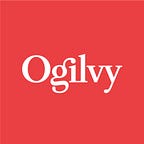This is part two of a six-part series. Earlier this year, just as the COVID pandemic was hitting the United States, we spoke with business leaders across industries, asking them to share their goals and challenges for their organizations as well as for themselves. Amid the surge of change since our conversations, these challenges have come front and center for any brand in the throes of disruption. Download the entire series in one PDF here.
We assumed there would be commonalities, but we didn’t really know what to expect when we embarked on interviewing business leaders to understand their biggest business challenges. They were CEOs, chief marketing officers, and business development leaders for brands that ran the gamut of established and emerging markets, brick-and-mortar and digital-first models, and global and U.S.-based organizations. After anonymizing anecdotes and comparing notes, chief among the common themes was their angst about growth amid diluted or distorted brand purpose. Keep in mind, this was February 2020, before everything changed. This need for focused growth has since gained greater urgency for many who are working to preserve revenue in the downturn.
Growth and purpose go hand in hand
Exactly how does organizational growth happen when there is lack of internal alignment? That was a question we heard over and over again. Further, how do you inspire people to drive and support growth when there is either an unclear or an unconvincing sense of organizational purpose? Our interviewees almost universally shared that their organizations struggle with lack of clarity, and they felt it was affecting their growth. “Belief in brand building can’t sit with one person; it needs to be embedded across the organization,” one leader asserted. But it’s not always easy to get all leaders on the same page. “If I get 10 people in a room, I get 10 different opinions,” mused another interviewee.
Clarity of purpose is good for business. Consumers speak with their wallets when it comes to brand purpose, and employees speak with their loyalty. Brands that are perceived as having a high positive impact on people’s lives have grown brand value 2.5 times more than brands with low perceived impact.¹ And purpose can drive preference. Worldwide, more than 60 percent of consumers under 30 prefer brands that “have a point of view and stand for something.”² Purpose matters to employees who want to do more than sell stuff, and consumers want to know that they are buying more than just things. In short, people want their loyalty to have a greater, more positive impact on their world.
Business leaders usually have keen insight about what their brand’s purpose is. Our interviewees knew their stories. One talked about the critical role their brand would play in solving the global food crisis. Another spoke excitedly about how their brand addresses the need for people to feel seen and know that people care; they just want their colleagues to get equally fired up. “I wish that immediately people would get passionate about how we can help our customer!” Our world has dramatically changed, and this need to inspire alignment has never been more critical for how organizations will adapt and adjust.
Moving toward inspired alignment
Business leaders want help inspiring people and driving internal alignment, and that means clarifying purpose, rallying leaders around it, and making it real for employees and consumers alike. Landing on a clear and compelling articulation of purpose can be especially challenging for more established organizations who, when formed, didn’t have “purpose” in their corporate lexicon. For younger companies, there are plenty of sources of inspiration for guidance when you are baking purpose in at the ground floor, whether you aim to be a B Corporation or dedicate to conscious capitalism.
The Harvard Business Review suggests that leaders and companies typically take one of two approaches to effectively define their purpose: retrospective or prospective. The former “builds on a firm’s existing reason for being,” while the latter requires leaders to look externally to “make sense of the future and then start gearing your organization for it.”³
However you arrive at your purpose, what counts is whether your purpose leads you. No matter your size or state of maturity, start by assessing your foundation: Who does your organization strive to be on its best day? Why should anybody, including your customers and employees, care? Answer those two questions as a leadership team honestly, and you will have a heck of a head start on driving alignment, sense of purpose, and growth.
As organization leaders look inward and outward, it’s critical to gain outside perspective, and have an approach for bringing it all together. In our experience, this kind of work goes best when played as a team sport — with a goal. When are our stakeholder voices best heard? Do they trump the voice of the customer? When is it decision-making time? Whether a consultative agency or research partner helps provide the perspective or leaders draw their inspiration from what’s happening in market and the world around them, nothing really gets done without a plan.
Are you having challenges inspiring alignment around your organization’s business priorities and brand purpose? It’s what we do. We’d love to help.
Amy Messenger, Managing Director, Ogilvy U.S. PR & Influence
[1] Kantar Consulting: Purpose 2020: Igniting Purpose-Led Growth, May 19, 2018
[2] Kantar Consulting, Purpose 2020: Igniting Purpose-Led Growth, May 19, 2018.
[3] Harvard Business Review, “Put Purpose at the Core of Your Strategy,” Thomas W. Malnight, Ivy Buche and Charles Dhanaraj, September–October 2019, https://hbr.org/2019/09/put-purpose-at-the-core-of-your-strategy
